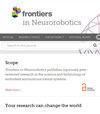多通道高阶网络表征学习研究
IF 2.6
4区 计算机科学
Q3 COMPUTER SCIENCE, ARTIFICIAL INTELLIGENCE
引用次数: 0
摘要
现有的网络表示学习算法主要基于网络的结构特征对网络节点之间的关系进行建模,或者利用文本特征、层次特征等外部属性实现网络联合表示学习。捕捉网络的全局特征可以使得到的节点向量在训练过程中保留更全面的特征信息,从而提高嵌入的质量。为了在训练结果中保留网络的全局结构特征,我们采用了多通道学习方法对网络进行高阶特征建模。我们提出了一种新颖的多通道高阶网络表征学习算法,称为多通道高阶网络表征(MHNR)算法。该算法首先从原始网络结构中构建高阶网络特征,从而将单通道网络表征学习过程转化为多通道高阶网络表征学习过程。然后,针对每个单通道网络表征学习过程,在算法中引入新颖的图同化机制,从而实现单通道网络表征学习中的高阶网络结构建模机制。最后,该算法整合了多通道和单通道的高阶网络结构联合建模机制,实现了网络结构特征的高效利用和充分建模。实验结果表明,本文提出的 MHNR 算法在 Citeseer、Cora 和 DBLP 数据上的节点分类性能达到了较好的阶次,其节点分类性能优于本文采用的对比算法。此外,当优化向量长度时,所提算法的节点平均分类准确率比 DeepWalk 算法高出 12.24%。因此,在没有外部特征补充建模的条件下,本文提出的算法只需基于网络的结构特征,其节点分类性能就能达到当前的最优阶。本文章由计算机程序翻译,如有差异,请以英文原文为准。
Multi-channel high-order network representation learning research
The existing network representation learning algorithms mainly model the relationship between network nodes based on the structural features of the network, or use text features, hierarchical features and other external attributes to realize the network joint representation learning. Capturing global features of the network allows the obtained node vectors to retain more comprehensive feature information during training, thereby enhancing the quality of embeddings. In order to preserve the global structural features of the network in the training results, we employed a multi-channel learning approach to perform high-order feature modeling on the network. We proposed a novel algorithm for multi-channel high-order network representation learning, referred to as the Multi-Channel High-Order Network Representation (MHNR) algorithm. This algorithm initially constructs high-order network features from the original network structure, thereby transforming the single-channel network representation learning process into a multi-channel high-order network representation learning process. Then, for each single-channel network representation learning process, the novel graph assimilation mechanism is introduced in the algorithm, so as to realize the high-order network structure modeling mechanism in the single-channel network representation learning. Finally, the algorithm integrates the multi-channel and single-channel mechanism of high-order network structure joint modeling, realizing the efficient use of network structure features and sufficient modeling. Experimental results show that the node classification performance of the proposed MHNR algorithm reaches a good order on Citeseer, Cora, and DBLP data, and its node classification performance is better than that of the comparison algorithm used in this paper. In addition, when the vector length is optimized, the average classification accuracy of nodes of the proposed algorithm is up to 12.24% higher than that of the DeepWalk algorithm. Therefore, the node classification performance of the proposed algorithm can reach the current optimal order only based on the structural features of the network under the condition of no external feature supplementary modeling.
求助全文
通过发布文献求助,成功后即可免费获取论文全文。
去求助
来源期刊

Frontiers in Neurorobotics
COMPUTER SCIENCE, ARTIFICIAL INTELLIGENCER-ROBOTICS
CiteScore
5.20
自引率
6.50%
发文量
250
审稿时长
14 weeks
期刊介绍:
Frontiers in Neurorobotics publishes rigorously peer-reviewed research in the science and technology of embodied autonomous neural systems. Specialty Chief Editors Alois C. Knoll and Florian Röhrbein at the Technische Universität München are supported by an outstanding Editorial Board of international experts. This multidisciplinary open-access journal is at the forefront of disseminating and communicating scientific knowledge and impactful discoveries to researchers, academics and the public worldwide.
Neural systems include brain-inspired algorithms (e.g. connectionist networks), computational models of biological neural networks (e.g. artificial spiking neural nets, large-scale simulations of neural microcircuits) and actual biological systems (e.g. in vivo and in vitro neural nets). The focus of the journal is the embodiment of such neural systems in artificial software and hardware devices, machines, robots or any other form of physical actuation. This also includes prosthetic devices, brain machine interfaces, wearable systems, micro-machines, furniture, home appliances, as well as systems for managing micro and macro infrastructures. Frontiers in Neurorobotics also aims to publish radically new tools and methods to study plasticity and development of autonomous self-learning systems that are capable of acquiring knowledge in an open-ended manner. Models complemented with experimental studies revealing self-organizing principles of embodied neural systems are welcome. Our journal also publishes on the micro and macro engineering and mechatronics of robotic devices driven by neural systems, as well as studies on the impact that such systems will have on our daily life.
 求助内容:
求助内容: 应助结果提醒方式:
应助结果提醒方式:


